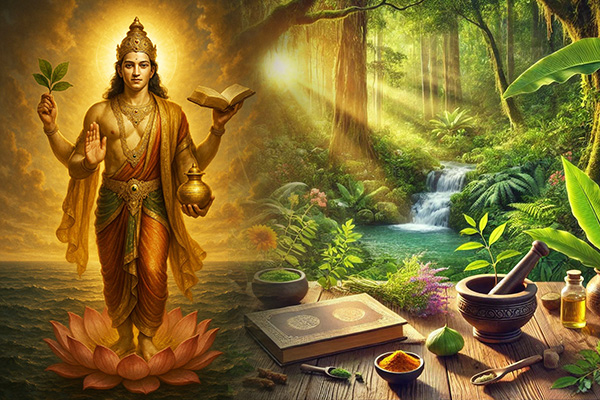
In the luminous pantheon of Sanatan Dharma, where divinity manifests through cosmic order and dharmic purpose, Lord Dhanvantari shines as the eternal healer. The deity who gifted humanity the sacred science of life: Ayurveda. He is not merely worshipped for relief from ailments; his presence affirms that true health is a spiritual state, where body, mind, and soul function in harmony with nature and dharma.
Emerging from the celestial Samudra Manthan, bearing the nectar of immortality, Lord Dhanvantari is honoured as the physician of the gods and the Father of Ayurveda, the divine science rooted in Vedic wisdom. His story is one of divine compassion, cosmic responsibility, and the sacred duty of healing.
Who is Lord Dhanvantari?
Lord Dhanvantari is the celestial physician, an incarnation of Lord Vishnu, who appeared to restore health and vitality to the world. He is revered not only as the god of medicine and healing but also as the divine originator of Ayurveda, the Vedic system of holistic health.
His name, Dhanvantari, symbolizes “the bearer of divine remedies” (Dhanvan = forest/medicine; Tari = one who crosses or uplifts). As the ocean of milk was churned by Devas and Asuras to obtain Amrit, it was Lord Dhanvantari who emerged holding the pot of nectar, symbolizing rejuvenation, longevity, and immortality.
He is not just worshipped by devotees for personal healing but deeply venerated by Ayurvedic doctors, herbalists, and healers, who consider him their divine guru. His legacy extends beyond myth, it continues in every ayurvedic text, treatment, and healing prayer.
Spiritual and Scriptural Significance of Lord Dhanvantari

Lord Dhanvantari is more than the divine healer. The is the embodiment of the cosmic intelligence of wellness, the source from which the science of Ayurveda flows. Spiritually, he represents the sattvic force that restores harmony in the body, mind, and spirit. His presence reminds humanity that true healing is rooted in balance, purity, and alignment with nature’s rhythm.
Scripturally, Lord Dhanvantari is glorified in texts like the Bhagavata Purana, Ramayana, and Agni Purana. He first appears during the Samudra Manthan (churning of the cosmic ocean), emerging from the depths holding the pot of Amrit, the elixir of immortality. This divine emergence signifies that health and vitality are the gifts of divine effort and inner churning.
His incarnation as the King of Kashi (Banaras) brought the teachings of Ayurveda to Earth. He categorized Ayurveda into eight branches, trained sages like Sushruta, and guided the healing of humanity. This sacred knowledge was not only curative but preventive, emphasizing a life of dharma, discipline, and harmony with nature.
In essence, Lord Dhanvantari stands as the bridge between divinity and medicine, a living testimony that healing is sacred.
The Emergence of Lord Dhanvantari: A Story from the Churning of the Ocean

In the grand cosmic drama of Samudra Manthan, when the Devas and Asuras churned the Ksheer Sagar (Ocean of Milk) seeking Amrit, the nectar of immortality, many divine treasures emerged. But none was more vital to life than Lord Dhanvantari, who rose from the depths with a radiant pot of Amrit in one hand and healing herbs in the other.
The churning was no simple feat. The mountain Mandara served as the churning rod, and the serpent Vasuki became the rope. As the ocean frothed, it first produced a deadly poison Halahala, which was consumed by Lord Shiva. Then came celestial beings, precious gems, divine animals, and finally, Dhanvantari, glowing with a bluish hue, draped in yellow silks, and adorned with sacred ornaments.
His emergence was not just to deliver Amrit to the gods but to reintroduce Ayurveda, a divine science long forgotten in the world. While the Asuras fought over the nectar, Lord Vishnu took the form of Mohini, the enchantress, and ensured the nectar reached the Devas.
From this cosmic event, Dhanvantari’s role as the eternal healer was sealed, not just as the bearer of immortality but as the divine origin of healing itself.
Sacred Iconography and Symbolism of Lord Dhanvantari

The form of Lord Dhanvantari is not merely artistic; it is a spiritual blueprint of divine healing. Every symbol he carries reveals a deeper truth about the nature of health, vitality, and balance.
He is often depicted with a radiant blue complexion, symbolizing his Vishnu origin and the vast, healing energy of the cosmos. His attire bright yellow garments reflect purity and divine light. His countenance is calm, majestic, and compassionate, reminding devotees that healing begins with inner peace.
In his four arms, Lord Dhanvantari typically holds:
- A pot of Amrit – the nectar of immortality and divine medicine.
- A leech (Jalauka) – representing traditional bloodletting and purification, acknowledging that even the smallest creature can aid in healing.
- A chakra and conch – signifying his Vishnu aspect and the power to dispel disease and ignorance.
- Ayurvedic herbs or texts – symbolizing the divine knowledge of holistic medicine.
In many depictions, a garland of Tulsi seeds and a glowing halo of plant wreaths surround him, marking his connection with the healing power of nature.
His image is not just venerated, it is meditated upon by healers and seekers alike, for he represents the perfect alignment of spiritual wisdom and physical well-being.
Mantras and Rituals to Invoke Lord Dhanvantari
Worshipping Lord Dhanvantari, the celestial physician, is a sacred invocation of divine healing energy. His mantras are not just sounds, they are vibrational medicines, bringing harmony to the body, mind, and soul.
Most Popular Dhanvantari Mantras
1. Simple Healing Mantra
ॐ श्री धन्वंतरये नमः
Om Shri Dhanvantariye Namah
Meaning: Salutations to the divine healer. May he protect me from all diseases and bless me with good health.
2. Dhanvantari Maha Mantra (from Puranas)
ॐ नमो भगवते महासुदर्शनाय वासुदेवाय धन्वंतरये अमृतकलश हस्ताय सर्व भय विनाशाय सर्व रोग निवारणाय त्रैलोक्यनाथाय श्री महाविष्णवे नमः।
Meaning: I bow to the Supreme Lord Vishnu, in the form of Dhanvantari, who holds the pot of Amrit and removes all fears and diseases from the three worlds.
Suggested Ritual Practice
- Begin with Achamana (purification with water) and Sankalpa (intention).
- Offer fresh herbs, tulsi leaves, incense, and lamps to the deity.
- Perform Abhishekam with Panchamrit, milk, curd, ghee, honey, and sugar.
- Chant the above mantras while meditating on his divine form.
- Conclude with Aarti and silent gratitude.
These practices are especially auspicious on Dhanteras, Trayodashi, and Wednesdays, days associated with healing and well-being.
Transformative Benefits of Worshipping Lord Dhanvantari
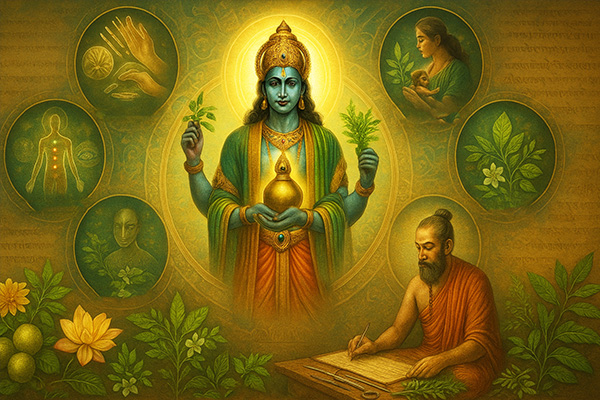
Worship of Lord Dhanvantari awakens a deep spiritual realignment with the laws of nature, vitality, and the dharma of health.
Here are the profound benefits:
- Restoration of Health: His blessings remove chronic and acute illnesses that resist conventional treatments, promoting natural healing from the root.
- Inner and Outer Harmony: Regular puja and mantra chanting balance the tridoshas, Vata, Pitta, and Kapha, leading to physical, emotional, and mental equilibrium.
- Spiritual Immunity: Dhanvantari worship acts as a spiritual shield against fear, anxiety, and negative karmic imprints related to suffering or pain.
- Longevity with Purpose: He grants not just longer life, but a life aligned with dharma, filled with meaning, discipline, and compassion.
- Grace for Healers and Doctors: For Ayurveda practitioners, doctors, and caretakers, his blessings open channels of intuitive healing and deepen their service.
- Detoxification of the Subtle Body: His mantras cleanse not just the physical body but also the nadis (energy channels), enhancing meditation and spiritual practices.
Worshipping Lord Dhanvantari is thus an act of inviting divine medicine into one’s life, not just to cure disease but to reawaken the sanctity of health itself.

Festivals Dedicated to Lord Dhanvantari: Honouring the Divine Healer
The most prominent celebration of Lord Dhanvantari is Dhanteras, observed two days before Diwali. It marks his divine appearance from the churning of the cosmic ocean with the Amrit Kalash (pot of nectar). This auspicious day is not only associated with wealth and prosperity but is especially sacred for invoking health and longevity.
Dhanteras (Dhanvantari Trayodashi)
Spiritual Meaning: Commemorates the birth of the divine physician who brought Amrit and Ayurveda to the world.
Traditions: Devotees light lamps, perform Dhanvantari puja, and pray for freedom from diseases.
Ayurveda Connection: Celebrated as National Ayurveda Day across India, especially in traditional medicine institutions and homes of Ayurvedic practitioners.
South Indian Observances: Temples in Tamil Nadu and Kerala offer special prayers and rituals. Devotees throng shrines dedicated to Dhanvantari in places like Thottuva (Kerala) and Srirangam (Tamil Nadu).
The celebration of this day revives faith in the eternal healing wisdom of Ayurveda and the divine intervention of Lord Dhanvantari.
Temples Dedicated to Lord Dhanvantari: Abodes of Divine Healing
Lord Dhanvantari, though a rare deity in temples compared to other forms of Vishnu, has a few sacred spaces where his presence radiates healing energy. These temples are especially revered by Ayurveda practitioners, healers, and those suffering from chronic or karmic ailments.
Key Temples in India
Thottuva Dhanvantari Temple, Kerala
Located near Ernakulam, this temple is known for its healing vibrations. The deity is enshrined facing east, with the right-hand blessing devotees and the left holding the pot of Amrit. It’s one of the very few temples exclusively dedicated to Dhanvantari.
Srirangam Ranganathaswamy Temple, Tamil Nadu
Inside this massive Vishnu temple complex is a shrine dedicated to Lord Dhanvantari. He is worshipped here as the divine healer and is believed to bless devotees with long life and release from illness.
Varadaraja Perumal Temple, Kanchipuram, Tamil Nadu
This ancient temple also has a shrine to Lord Dhanvantari. Devotees often offer prayers here for recovery from ailments, especially during Dhanteras.
Ayurveda Maha Sammelan, Dhanwantari Bhawan, Delhi
Though not a temple in the traditional sense, this is a spiritual centre where Ayurvedic practitioners gather to invoke Lord Dhanvantari’s blessings and celebrate National Ayurveda Day with great reverence.
These temples serve not just as places of worship, but as energetic sanctuaries where seekers reconnect with the divine source of healing.
Presence in Other Traditions: The Unparalleled Healing Wisdom of Sanatana Dharma
Across the vast spiritual landscape of the world, no other tradition matches the timeless depth, mystical power, and living presence of divine immortals like Lord Dhanvantari. Sanatana Dharma stands unique in its vision, not only acknowledging the divine as formless but also manifesting it through Avatars who directly guide humanity.
While no other religion holds the concept of a divine healer who dispenses immortality, a few cultural parallels exist in symbolic form:
Asclepius (Greek Tradition) – Known as the god of medicine, he holds a staff with a serpent, resembling Dhanvantari’s role as a healer. Yet, his stories remain mythic without a living tradition of worship or daily invocation.
Imhotep (Ancient Egyptian) – A polymath revered posthumously as a healing deity. Unlike Dhanvantari, he was human-born and later deified.
Bhaisajyaguru (Medicine Buddha in Buddhism) – Revered in Mahayana Buddhism for healing both physical and spiritual ailments, but without the organic connection to Ayurveda or the avatar tradition.
Despite these resemblances, only Lord Dhanvantari emerges from cosmic churning, carrying the nectar of immortality, embodying divine intent to heal, and founding an entire medical science rooted in dharma.
Sanatana Dharma does not merely revere healers. It invokes them, embodies them, and preserves their living presence through temples, mantras, and sacred days. Lord Dhanvantari is not just remembered; he is worshipped and experienced.
Invoke Healing with Rudra Centre’s Lord Dhanvantari Offerings
To seek divine health and longevity, Rudra Centre offers authentic, energised products and puja services aligned with the healing energies of Lord Dhanvantari:
Dhanvantari Puja and Yagna
A powerful Vedic ritual performed by expert priests to invoke the healing force of Dhanvantari for protection from disease, speedy recovery, and holistic well-being.
Click on the link to buy Dhanvantari Puja & Yagna
https://www.rudraksha-ratna.com/buy/dhanvantri-puja-and-yagna
Dhanvantari Vayu Tatva Idol
A beautifully crafted idol infused with the Vayu (air) element energy, ideal for home altars. It radiates healing vibrations, strengthens pranic flow, and supports respiratory and subtle body wellness.
Click on the link to buy Dhanvantari idol
https://www.rudraksha-ratna.com/buy/dhanvantari---vayu-tatva
Sarva Rog Nivaran Maha Yantra
An energised copper Yantra that acts as a spiritual shield against chronic and karmic diseases. It balances the body's energy and enhances vitality.
Click on the link to buy Sarva Rog Nivarana Maha yantra
https://www.rudraksha-ratna.com/buy/sarva-rog-nivaran-maha-yantra
Dhanteras Puja
A sacred puja to honour Lord Dhanvantari on Trayodashi. It brings blessings of health, wealth, and Ayurvedic wisdom, marking the spiritual beginning of Diwali.
Click on the link to buy Dhanteras Puja
https://www.rudraksha-ratna.com/buy/dhanteras-puja
Each offering carries the blessings of Lord Dhanvantari, the eternal healer of the universe bringing divine protection and radiant health into your life.


-in-Astrology.jpg)

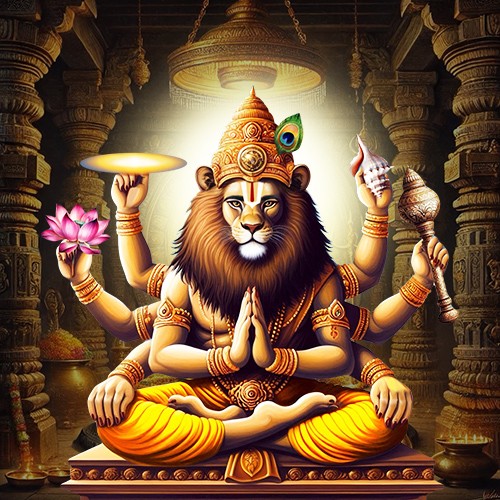
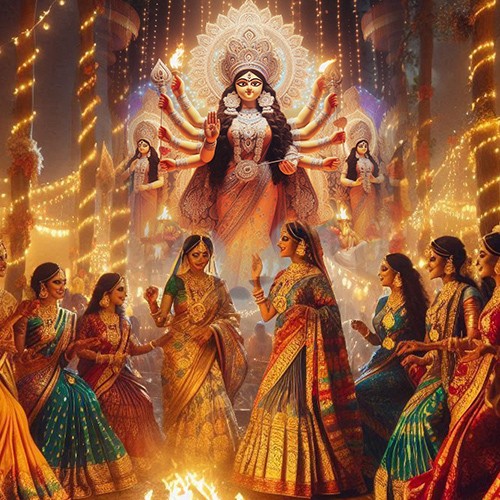
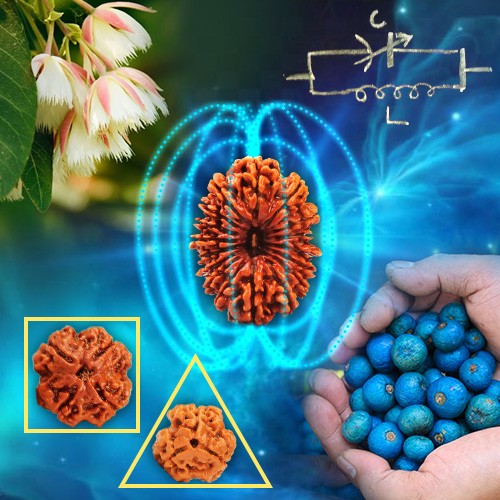


.jpg)
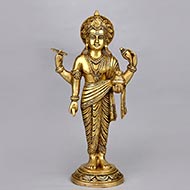
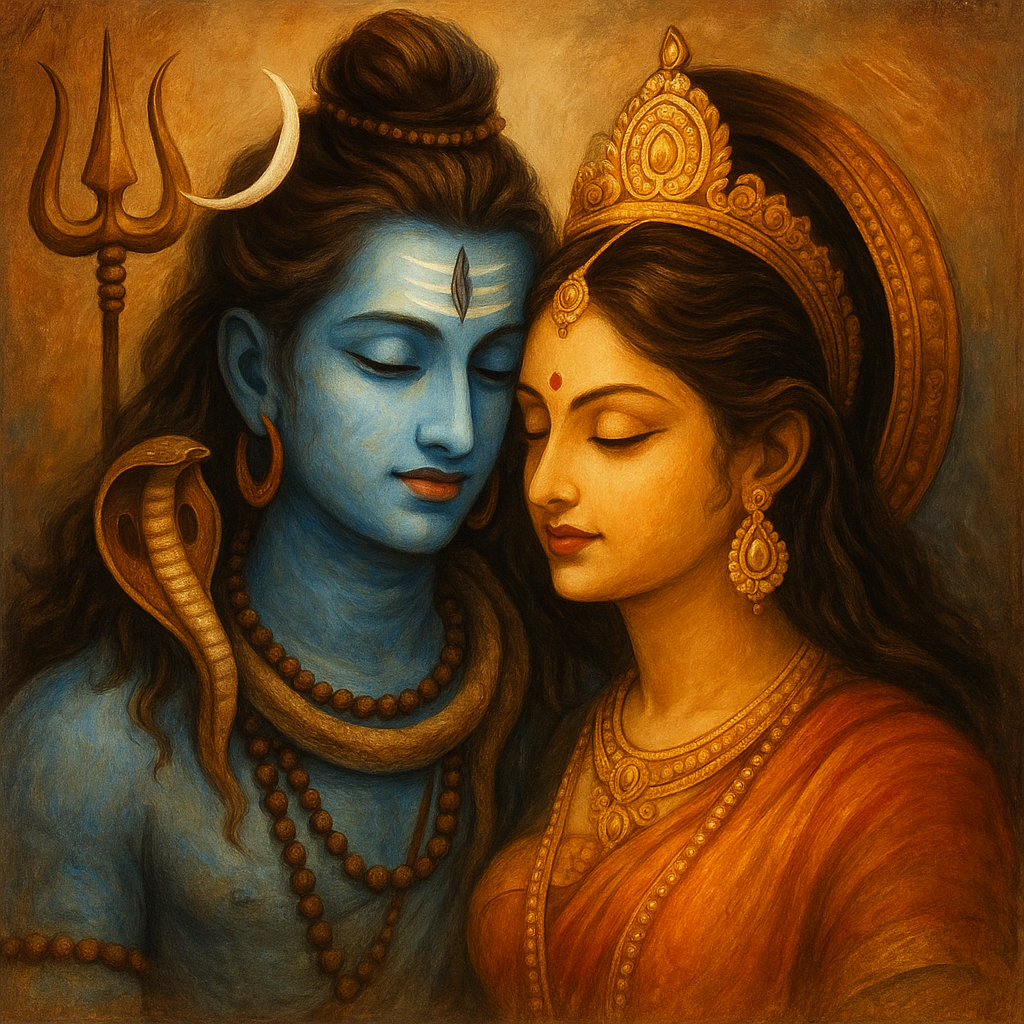
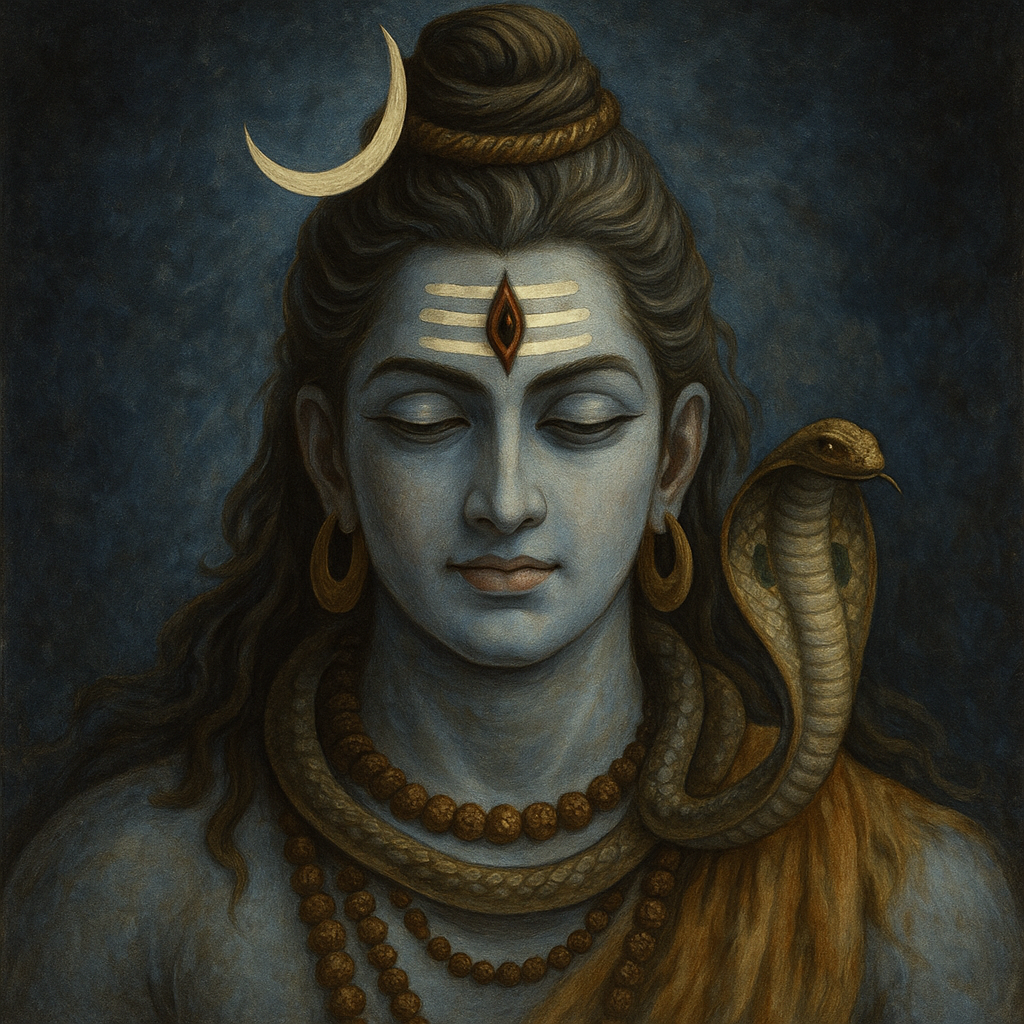
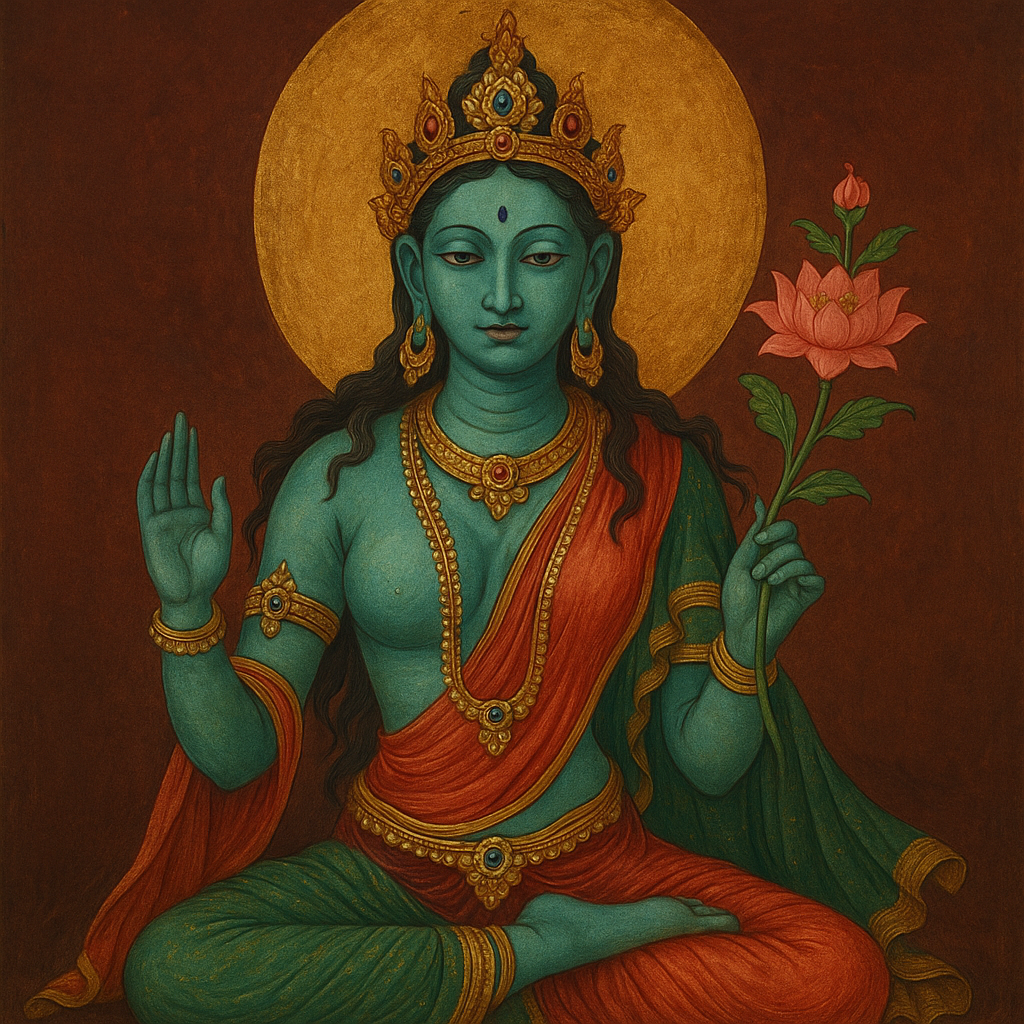
Comments 0
Leave your thought here